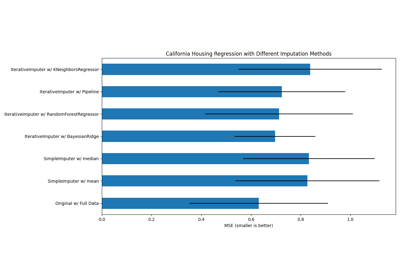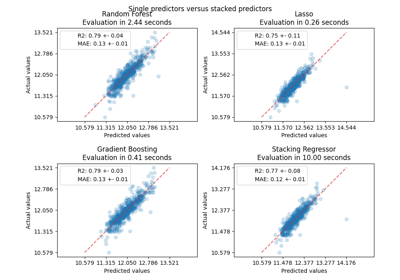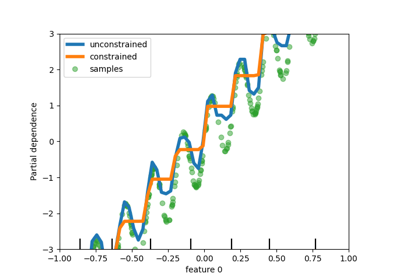Note
Go to the end to download the full example code or to run this example in your browser via JupyterLite or Binder
Displaying estimators and complex pipelines#
This example illustrates different ways estimators and pipelines can be displayed.
from sklearn.compose import make_column_transformer
from sklearn.impute import SimpleImputer
from sklearn.linear_model import LogisticRegression
from sklearn.pipeline import make_pipeline
from sklearn.preprocessing import OneHotEncoder, StandardScaler
Compact text representation#
Estimators will only show the parameters that have been set to non-default values when displayed as a string. This reduces the visual noise and makes it easier to spot what the differences are when comparing instances.
lr = LogisticRegression(penalty="l1")
print(lr)
LogisticRegression(penalty='l1')
Rich HTML representation#
In notebooks estimators and pipelines will use a rich HTML representation. This is particularly useful to summarise the structure of pipelines and other composite estimators, with interactivity to provide detail. Click on the example image below to expand Pipeline elements. See Visualizing Composite Estimators for how you can use this feature.
num_proc = make_pipeline(SimpleImputer(strategy="median"), StandardScaler())
cat_proc = make_pipeline(
SimpleImputer(strategy="constant", fill_value="missing"),
OneHotEncoder(handle_unknown="ignore"),
)
preprocessor = make_column_transformer(
(num_proc, ("feat1", "feat3")), (cat_proc, ("feat0", "feat2"))
)
clf = make_pipeline(preprocessor, LogisticRegression())
clf
Total running time of the script: (0 minutes 0.029 seconds)
Related examples

Imputing missing values with variants of IterativeImputer




